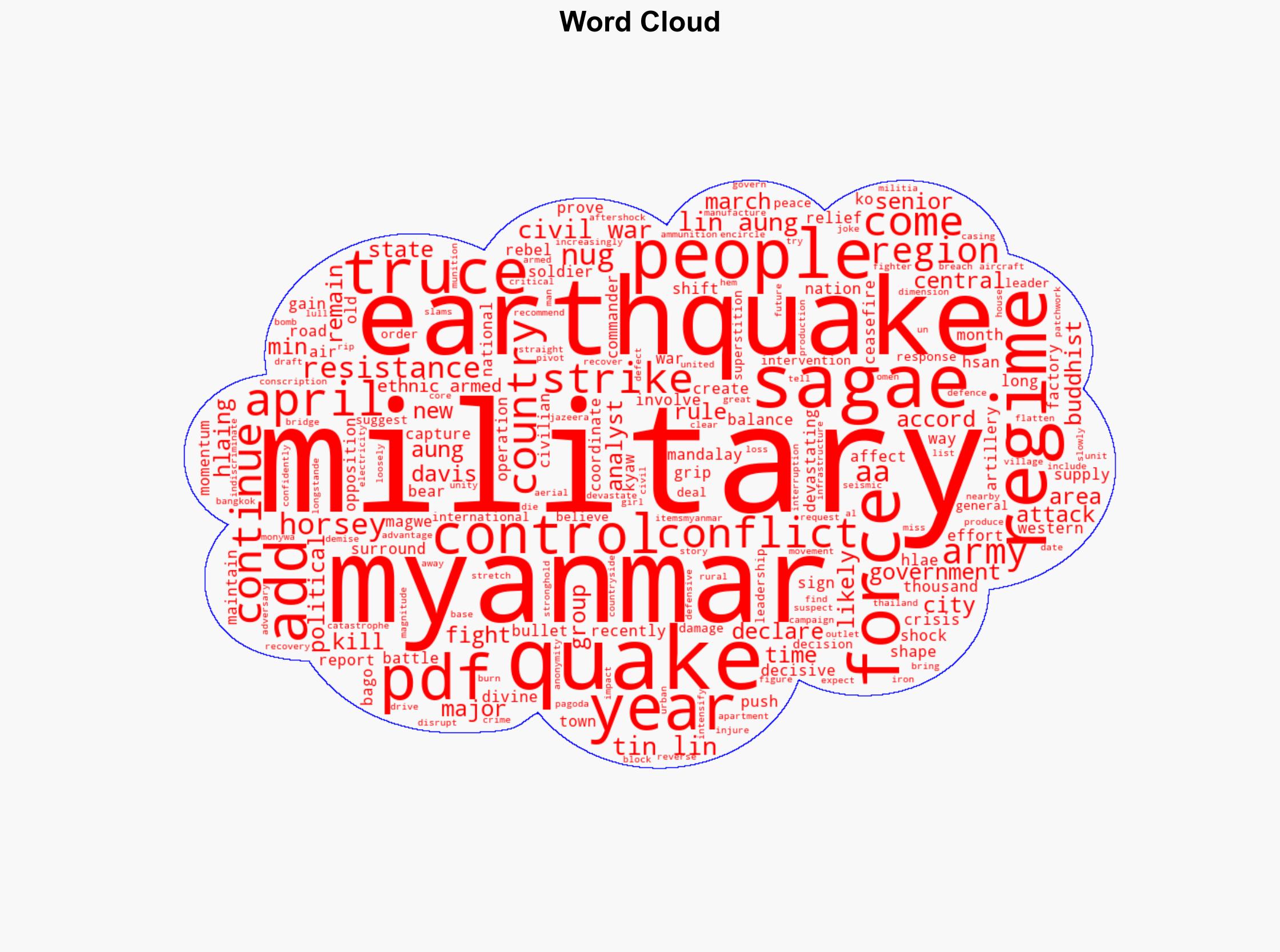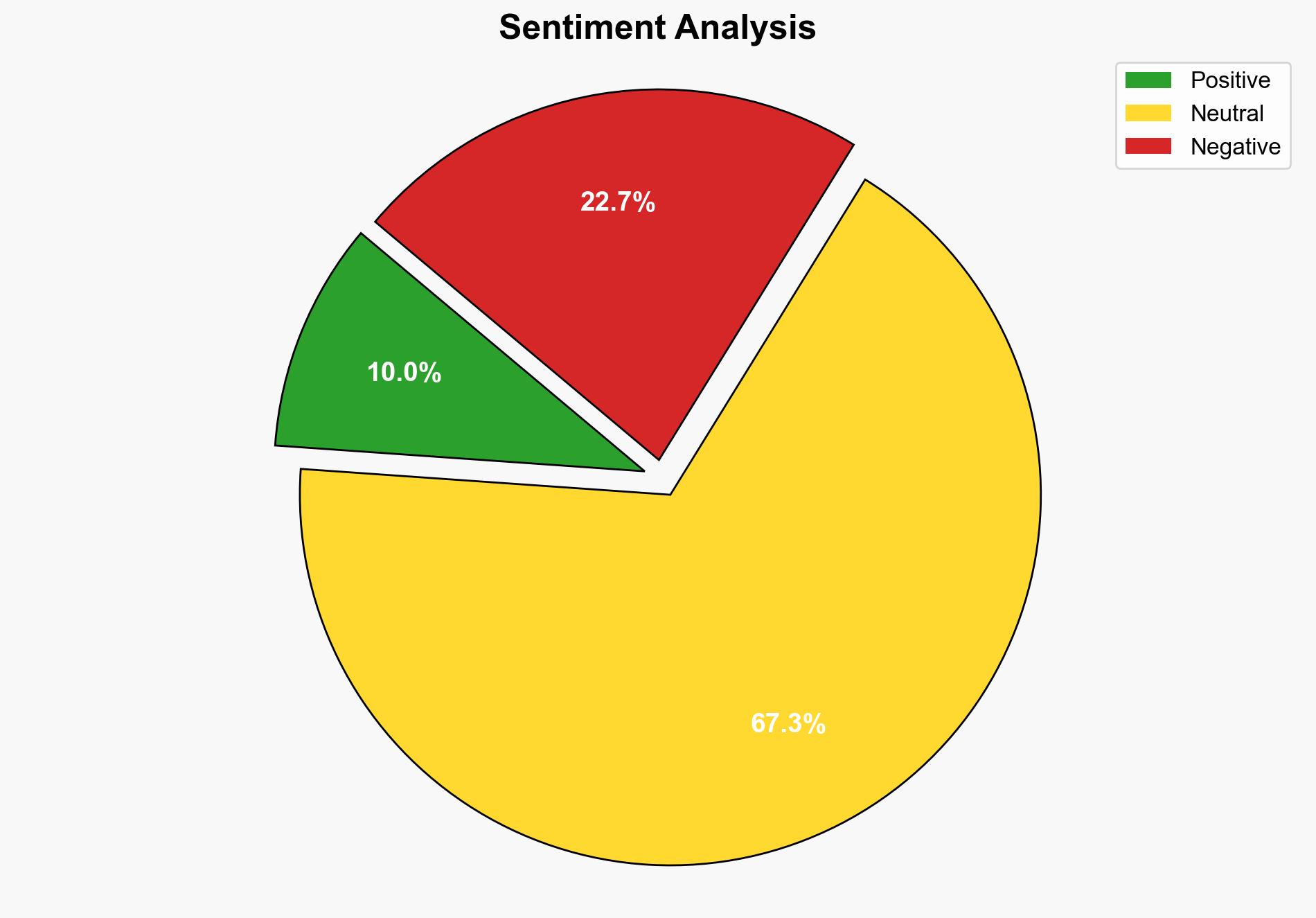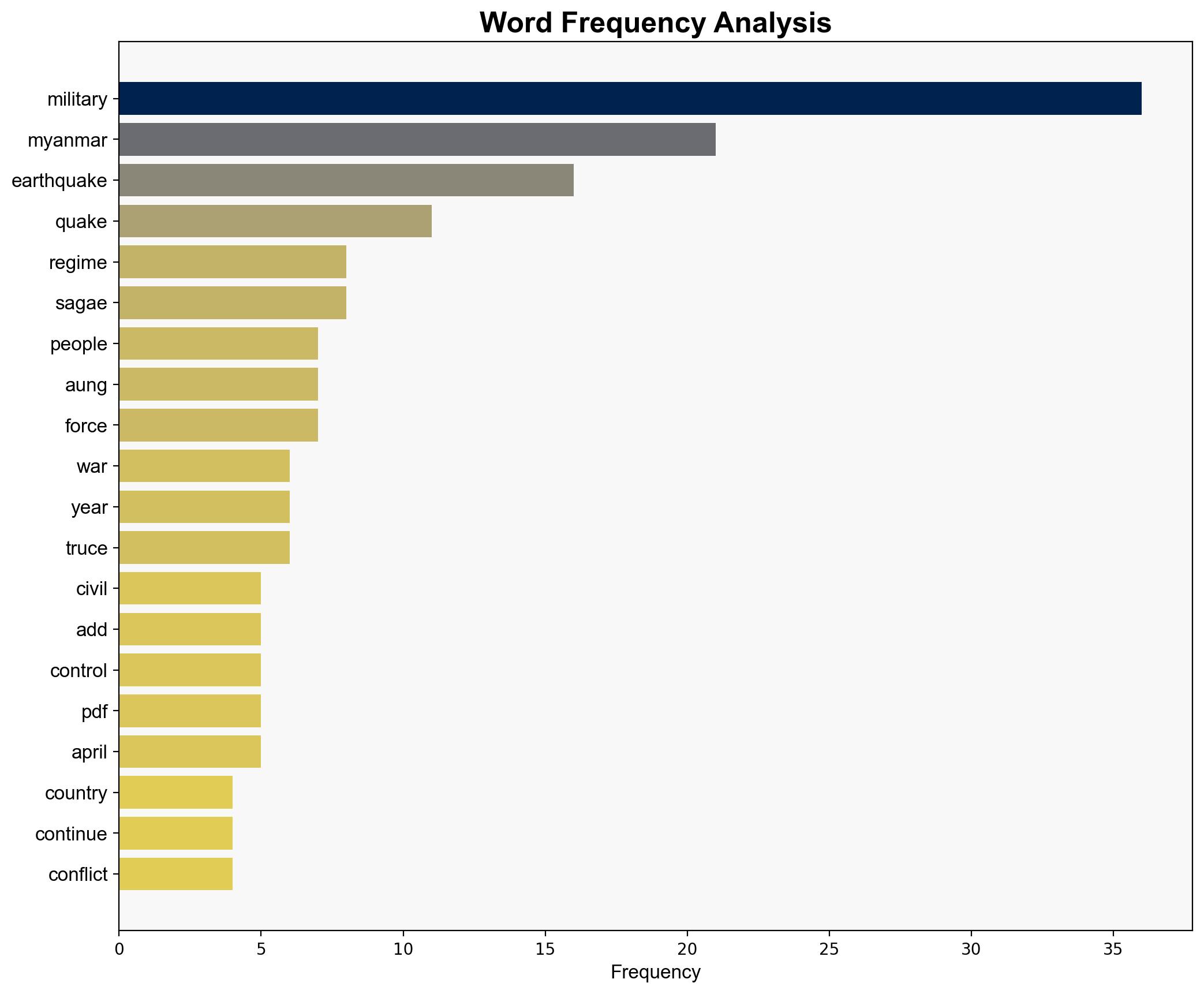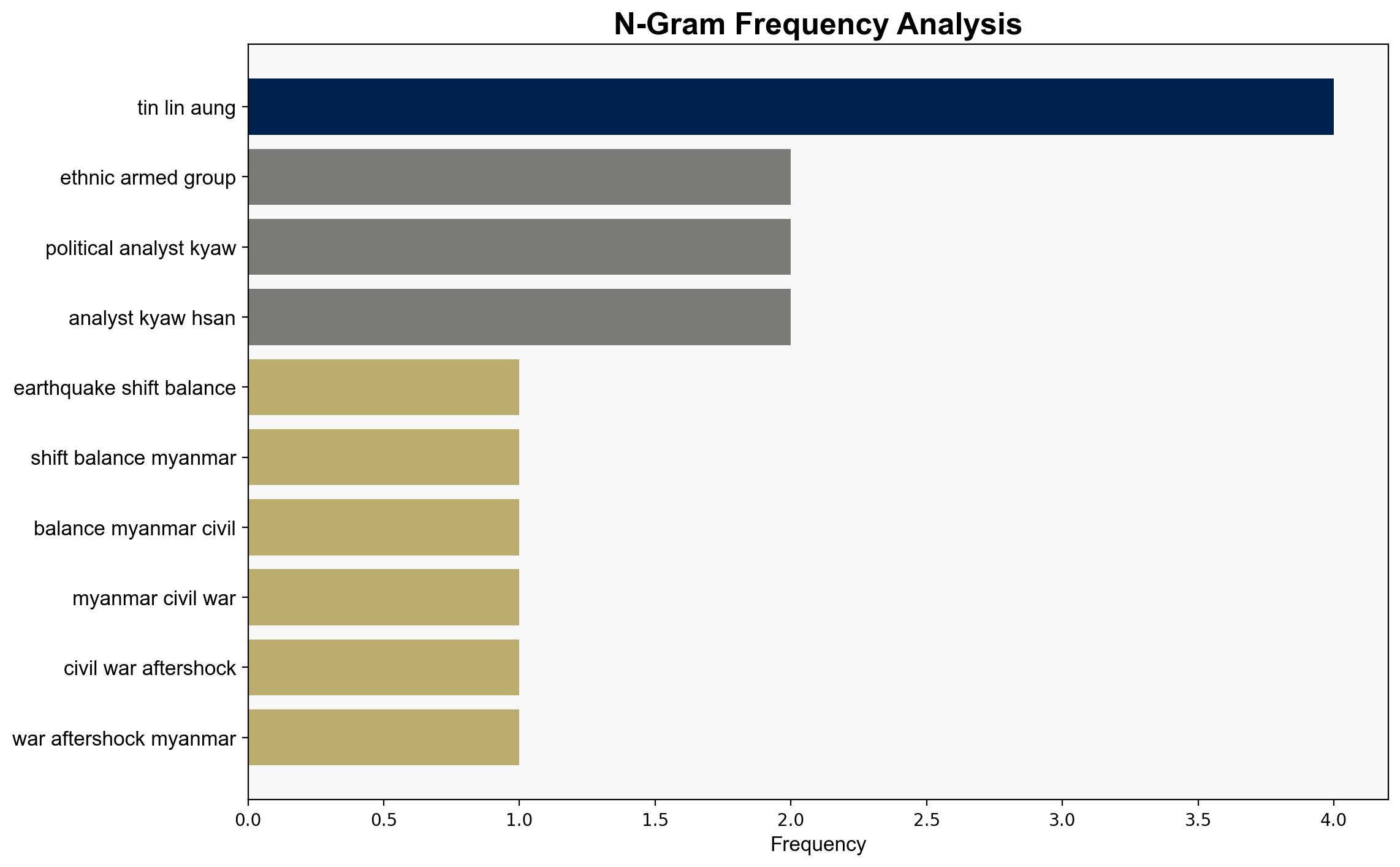Could an earthquake shift the balance in Myanmars civil war – Al Jazeera English
Published on: 2025-04-19
Intelligence Report: Could an earthquake shift the balance in Myanmar’s civil war – Al Jazeera English
1. BLUF (Bottom Line Up Front)
The recent earthquake in Myanmar has introduced a new variable in the ongoing civil conflict. While the immediate aftermath has seen a temporary lull in hostilities, it is unlikely to cause a long-term shift in the balance of power. The military’s strategic objectives remain unchanged, and both sides are expected to resume operations once immediate relief efforts conclude. Key recommendations include monitoring military movements and preparing for potential escalations in conflict zones.
2. Detailed Analysis
The following structured analytic techniques have been applied:
Scenario Analysis
The earthquake has temporarily disrupted military operations, particularly in the central Sagaing region. However, the military’s control over major urban areas and critical infrastructure remains intact. Future scenarios include a resumption of military offensives or a potential increase in resistance activities as groups exploit the temporary disruption.
Key Assumptions Check
It is assumed that the military will prioritize maintaining control over key regions and infrastructure. The resistance groups are expected to leverage any perceived weaknesses. These assumptions should be monitored for changes, particularly in the military’s capacity to sustain operations.
Indicators Development
Key indicators include military supply chain disruptions, shifts in control of strategic locations, and changes in the frequency and intensity of military engagements. Monitoring these indicators will provide insights into potential escalations or shifts in conflict dynamics.
3. Implications and Strategic Risks
The earthquake has exposed vulnerabilities in Myanmar’s infrastructure, potentially affecting military logistics and civilian morale. The temporary truce in some areas may lead to strategic regrouping by resistance forces. Economic impacts from infrastructure damage could further destabilize the region, exacerbating existing tensions.
4. Recommendations and Outlook
- Enhance intelligence gathering on military supply lines and resistance movements to anticipate potential escalations.
- Support humanitarian efforts to stabilize affected regions, potentially reducing civilian support for armed resistance.
- Prepare for scenario-based projections where military offensives resume post-relief efforts, focusing on strategic locations like Sagaing and Mandalay.
5. Key Individuals and Entities
Tin Lin Aung, Ko Ko Gyi, Anthony Davis.




